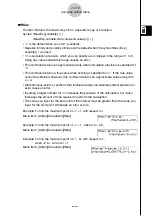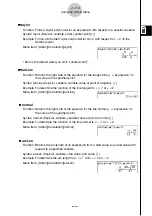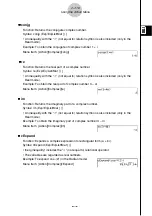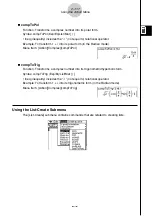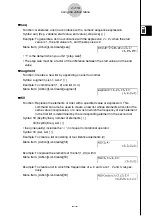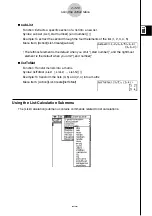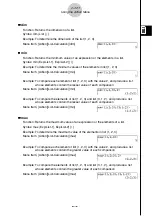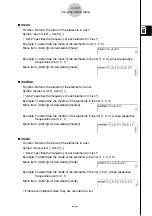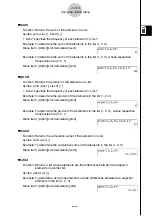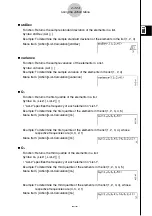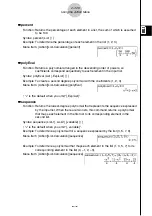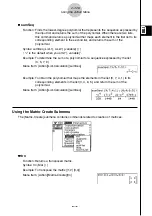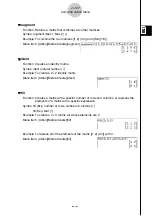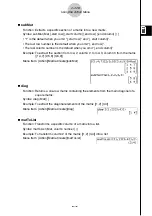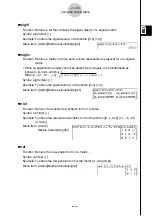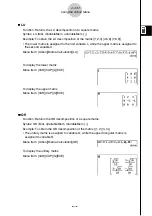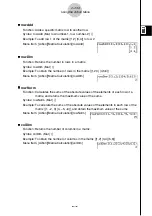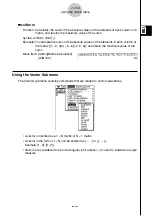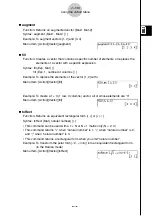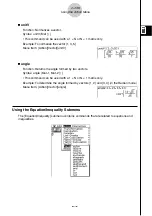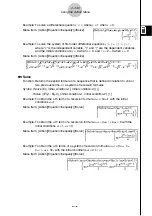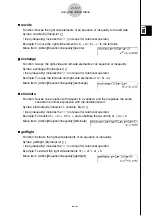
20021201
2-7-26
Using the Action Menu
u
u
u
u
u
sumSeq
Function: Finds the lowest-degree polynomial that represents the sequence expressed by
the input list and returns the sum of the polynomial. When there are two lists,
this command returns a polynomial that maps each element in the first list to its
corresponding element in the second list, and returns the sum of the
polynomial.
Syntax: sumSeq (List-1[, List-2] [,variable] [ ) ]
• “
x
” is the default when you omit “[, variable]”.
Example: To determine the sum of a polynomial for a sequence expressed by the list
{3, 5, 7, 9}
Menu Item: [Action][List-Calculation][sumSeq]
Example: To obtain the polynomial that maps the elements in the list {9, 7, 4, 1} to its
corresponding elements in the list {0, 4, 6, 5}, and return the sum of the
polynomial.
Menu Item: [Action][List-Calculation][sumSeq]
Using the Matrix-Create Submenu
The [Matrix-Create] submenu contains commands related to creation of matrices.
u
u
u
u
u
trn
Function: Returns a transposed matrix.
Syntax: trn (Mat [ ) ]
Example: To transpose the matrix [[1,2] [3,4]]
Menu Item: [Action][Matrix-Create][trn]

